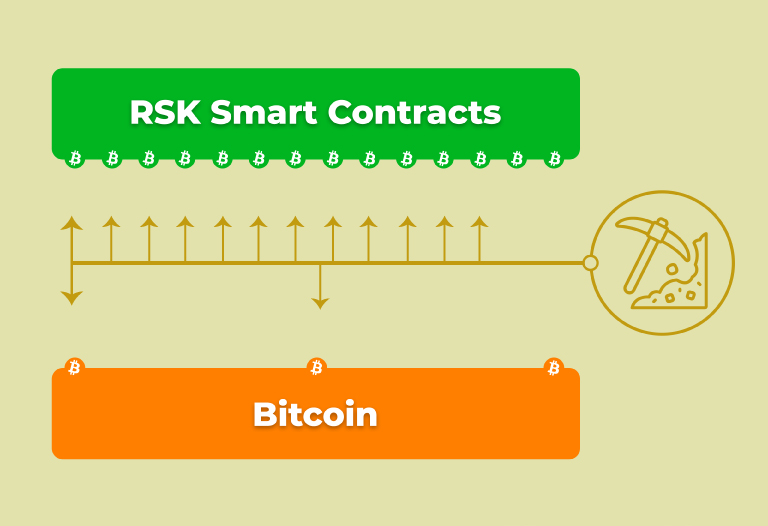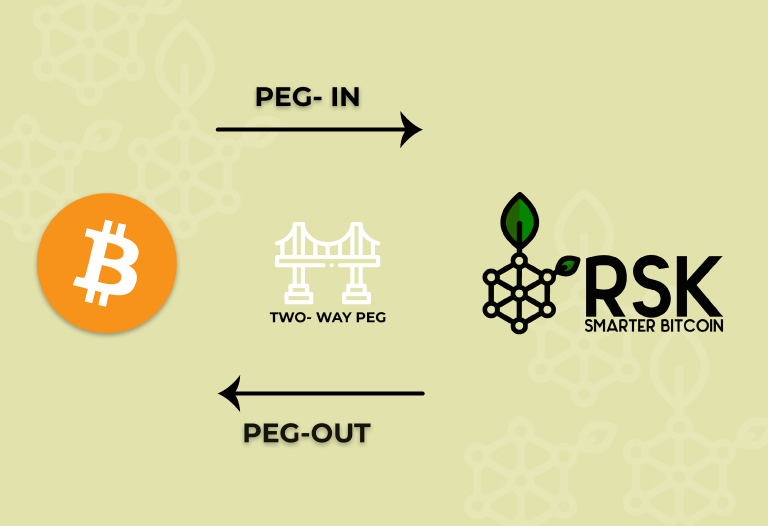
Table of Contents
ToggleRSK or Rootstock is a smart contract platform for Bitcoin. Among the developers (most of them Latin American) is Sergio Demian Lerner, a recognized security expert who has confused 7 tech companies and has collaborated to strengthen the security of Bitcoin Core by discovering and reporting 9 vulnerabilities.
RSK’s native currency is RBTC (smart bitcoin) and maintains a 1:1 parity with bitcoin thanks to the use of a “bridge” or “two way peg” mechanism between the two blockchains.
In this article we are going to explain the features of RSK and its bridge to Bitcoin. But first let’s see some context about sidechains.
The vision of the sidechains
In 2014 a group of well-known Bitcoin researchers and developers published a paper in which they put forward the idea of the sidechain. A Bitcoin sidechain would be another blockchain where the native currency is also bitcoin.
Thanks to a mechanism, a user could move bitcoin from the Bitcoin blockchain to a sidechain and, whenever they wanted, send it back to the main Bitcoin blockchain. This would allow for endless innovation as bitcoin could be used on blockchains such as Ethereum, Monero or Zcash, and would absorb any utility from other currencies.
But there is a big problem. Bitcoin’s design does not allow for the construction of this mechanism. Bitcoin would have to know when a user wants to transfer their coins to the main network, and the Bitcoin language does not allow this (for good reason since its simplicity is a security feature).
However, developers are working to make this vision a reality. On the one hand with proposals to change Bitcoin (drivechains, simplicity) and on the other hand with federated systems (RSK, Liquid).
The RSK blockchain
RSK is a sidechain of the Bitcoin blockchain but with similarities to Ethereum. It is a “Turing complete” system and the Rootstock Virtual Machine (RVM) is almost identical to the Ethereum Virtual Machine (EVM). Therefore any contract in Ethereum is portable to RSK and can be programmed in Solidity, the industry standard language for smart contracts and decentralized applications.
In addition, RSK has made a series of optimizations to have a more efficient blockchain without excessively increasing the cost of operating a complete node (a computer to verify all transactions).
Any scalability system for Ethereum, such as rollups and advanced versions of Lightning Network, is possible in RSK. And the average time for each block is 30 seconds.
Block production (mining)
Unlike Liquid Network’s sidechain, for example, block creation and transaction processing is not done with a federation. RSK uses merged mining, a more decentralized solution.
In merged mining, Bitcoin miners themselves mine the secondary network, in this case RSK. Because the miners send a proof of work every 30 seconds to demonstrate their work to the mining pools, they can also send it to the RSK network (hence a block is produced every 30 seconds).
In this way a Bitcoin miner can additionally earn commissions from RSK transactions and, in fact, a large portion of miners do so.

The bridge between Bitcoin and RSK
As we have explained, the Bitcoin blockchain itself cannot operate a bridge. So there is currently no choice but to use a federation, that is, a group of people who keep your bitcoin on the main network while you use the sidechain and who promise to return it when you require it.
In terms of trust, this is better than a centralized exchange. There is no central entity with control of the funds but to use bitcoin requires the authorization of a majority within the individuals of the federation.
This is Liquid’s model and was also RSK’s at first, but they decided to make a modification for safety. The new bridge mechanism was called powpeg.
In the powpeg bridge, federation members use devices known as “hardware security modules” (HSMs) to store the private keys that control the locked bitcoin. The HSMs do not show the keys to anyone, are tamper proof and sign bitcoin return transactions autonomously. In other words, federation members cannot agree to steal the bitcoin, in the worst case they can only disconnect the HSMs preventing bitcoin recovery. As long as this does not happen, 1 RBTC can be exchanged for 1 BTC using the bridge.

Adoption and future
As we have seen RSK is a very promising platform for Bitcoin that has tried to optimize for the highest possible security using bitcoin as a native currency. It has major projects like Sovryn and Money on Chain, has over 1,500 RBTC and can scale as much as Ethereum. If RSK is a layer 2 of bitcoin, layer 3 will be developed with RIF on top of RSK.
But perhaps the biggest breakthrough will be to modify Bitcoin so that RSK can get rid of reliance on the bridge federation and fulfill a dream of many bitcoiners for years.







